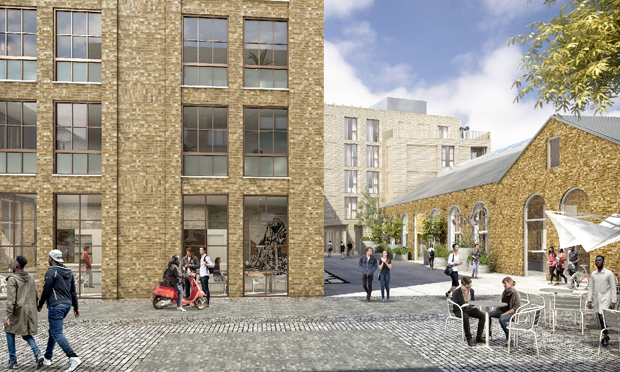Victory for campaigners in ‘turnaround’ over Hackney Wick regeneration

Green light: plans to redevelop parts of Hackney Wick have been approved. Image: Hectic Electric / Stockwool
Heritage campaigners have hailed a £10m Hackney Wick regeneration scheme as a “turnaround”, after objections led developers to revise their original plans.
The London Legacy Development Corporation (LLDC) last week gave the go-ahead – subject to legal approval – to the project, which will include commercial space and 44 new homes – though just 11 units, or 5 per cent, will be affordable housing.
Heritage activists had objected to plans by developers M&D Silk Properties for the site on the corner of Wallis Road and Berkshire Road.
In response, the LLDC commissioned a heritage consultancy called Historic Training to assess the plans, taking into account the site’s place in the Hackney Wick Conservation Area and the historic importance of the
existing buildings.
Historian Tom Ridge, founder of East End Waterway Group (EEWG), objected to the original proposals but welcomed last week’s decision.
“As a result of the letters of objection, a good case officer, and the heritage consultation, this whole proposal got turned round,” said Mr Ridge.
“Now, instead of making the old buildings look like they’re new buildings, they are adopting a much more conservation-led approach. I’m really pleased that permission has been given.”
In a submission on behalf of the EEWG in September 2015, Mr Ridge concluded that the plans failed to “reinforce and celebrate the significance” of the existing buildings, adding that “only a proper conservation-led approach can secure this specific requirement.”
The site has buildings from the 19th century Parkesine Works where inventor Alexander Parkes created the first man-made plastic.
John Woolstencroft, partner at the development’s achitects, Stockwool, said: “This scheme represents a cornerstone of the wider regeneration of the Wick.
“It will preserve and enhance historic buildings and contribute to the vitality and urban quality of this new emerging neighbourhood.”
Richard Brown, co-founder of local design and planning consultancy Unit-APD, welcomed the heritage preservation efforts but said that any benefits are still “speculative”.
“The majority of the new homes are one- or two-bed, so there is very little provision for families,” Mr Brown said. “There a lots of pressures on these developments, always at the cost of affordable housing.”
John Woolstencroft, Partner at Stockwool, the architects firm which designed the development, said: “This scheme represents a cornerstone of the wider regeneration of the Wick. It will preserve and enhance historic buildings and contribute to the vitality and urban quality of this new emerging neighbourhood.”
Work will start on the site in early 2017 with developers aiming to complete the project by spring 2018.
